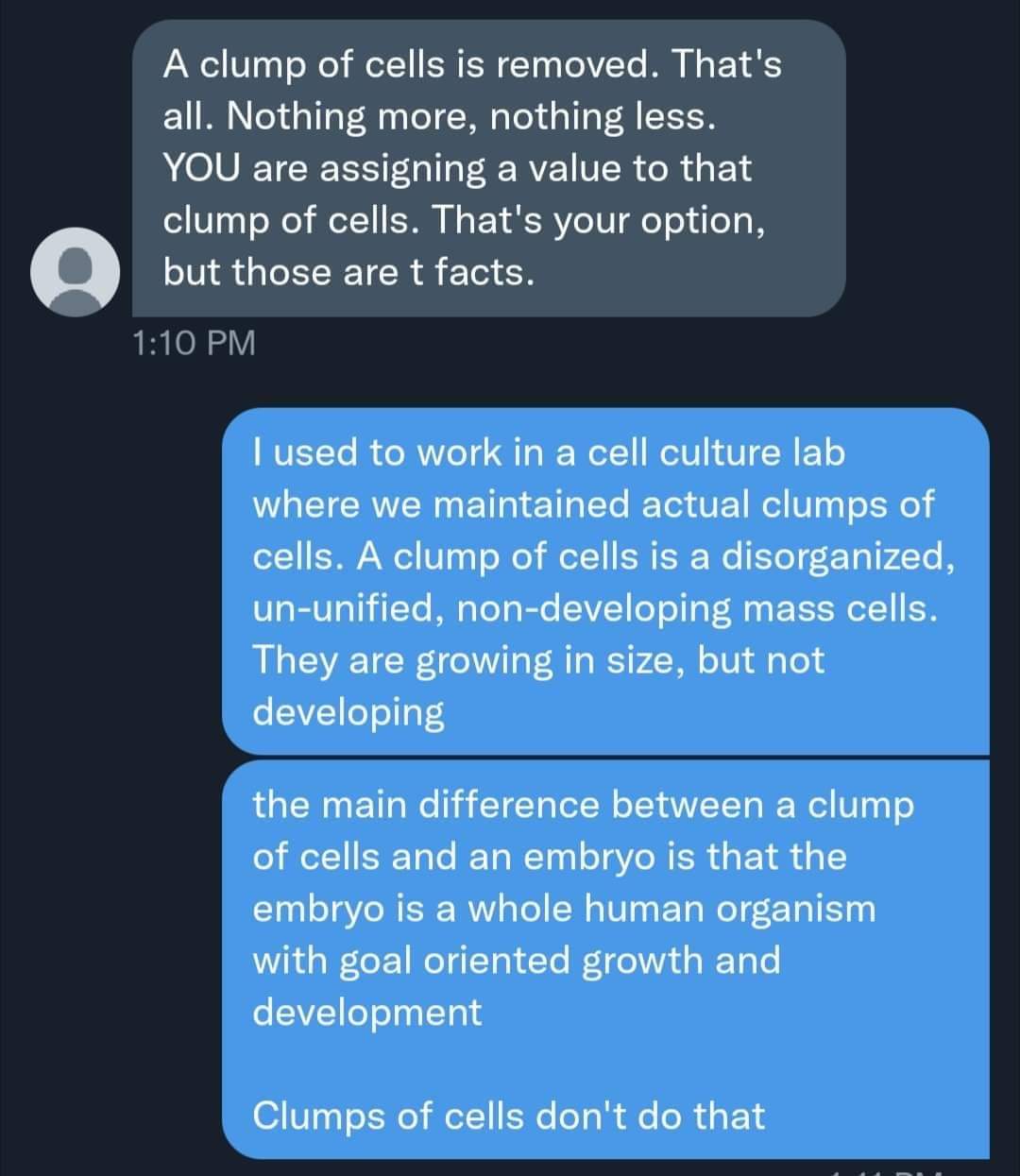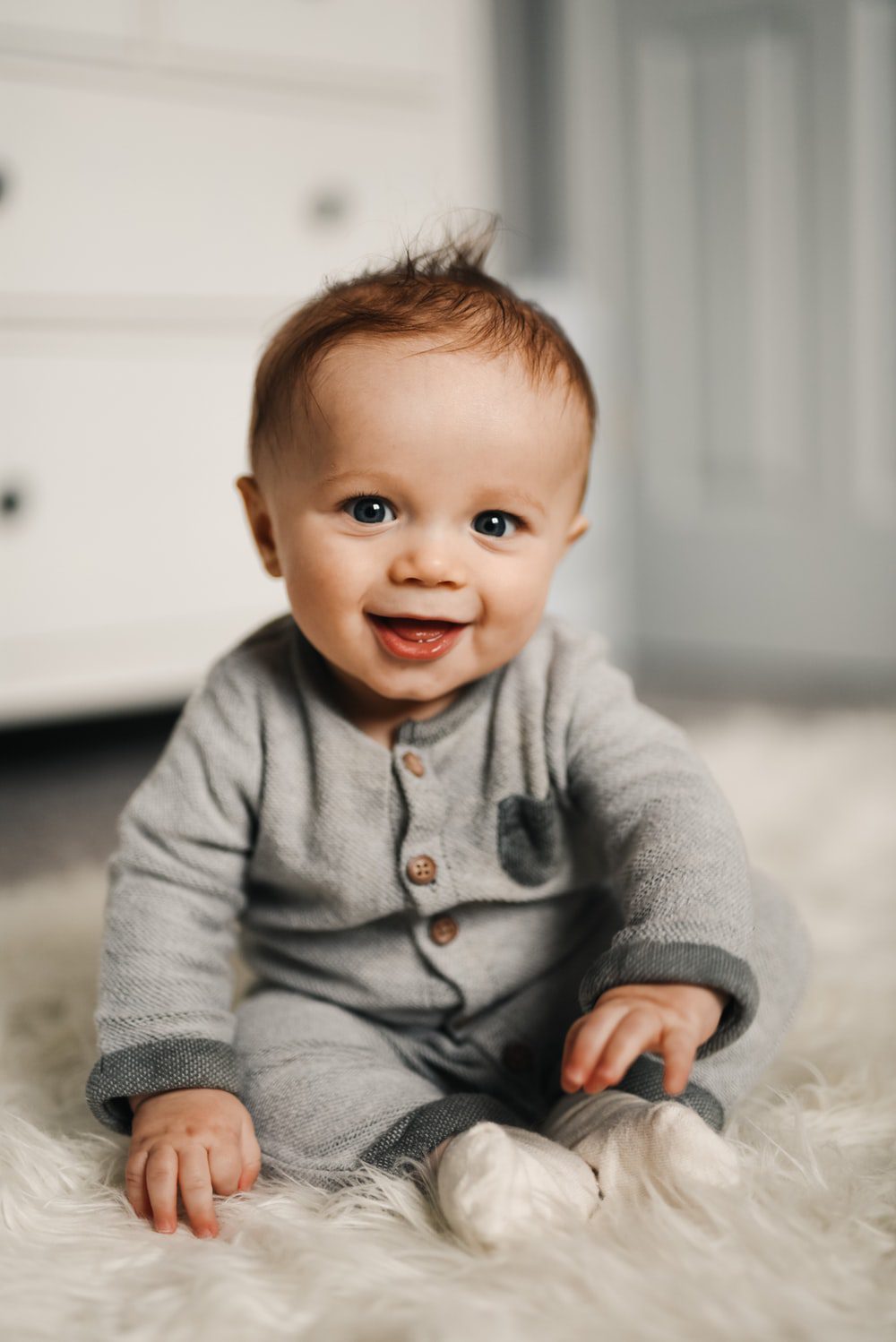For the last few weeks I have been posting discussions on the matter of the Dobbs ruling, in a rather compartmentalized format. In other words taking each aspect, and breaking it down for the purpose of clarity. For the other discussions you’ll notice links toward the bottom of of this post.
This one is about the human element.
Let’s start with this one. I culled this from a Twitter exchange some weeks ago and never got around to using it but it seems to fit here very nicely.

The science has changed since the days of Roe, in nearly everything, including neonatal science.
As the Washington Examiner put it back in 2019;
Perhaps the biggest change in the long, sad debate over abortion is that science, which was once seen as an ally of abortion advocates, is now recognized as being squarely on the side of life.
Every few months brings a technological advancement or scientific breakthrough that more fully reveals the unborn child as a living, feeling human being.
Most of what we now know about the fetus was unknown or in dispute when Roe was decided in 1973.
The Examiner goes on from there, discussing Roe:
In his majority opinion, Justice Harry Blackmun wrote that the court “was not in a position to speculate as to the answer” of when life begins. Blackmun proceeded to speculate, writing that, “There has always been strong support for the view that life does not begin until live birth.”
We now know that’s not true. We now know that at the moment of fertilization, a new, unique human embryo with unique DNA is created. We now know that even at that early stage, an individual human life exists. We now know that the unborn baby’s heart begins to beat at three weeks, that brain waves can be detected as early as five weeks, and that all of the unborn baby’s organs are fully formed by 24 weeks.
(The emphasis is mine)
Advancements in fetal medicine now make it possible for unborn babies to survive outside the womb as early as 22 weeks. The year Roe was decided, the lower limit was 28 weeks. We also know that unborn babies can feel pain at a point in the pregnancy when the most gruesome abortion procedures are still legal.
I’m not quite sure why these time frames are an important distinction. After all, postulate a live birth. Put the child in a crib. Would the child be able to survive on its own at this stage? Of course not. So why is this argument even brought up? As best I can tell, it was an argument intended to obfusticate arguments from the pro-life side that life actually begins at conception.
It strikes me as interesting that just recently we’ve been told to “follow the science”. And yet the same crowd, is reluctant to accept the science here.
The more we recognize these facts, the easier it becomes to recognize the fact of the unborn baby’s humanity. And the harder it becomes to deny the baby’s inherent dignity.
Science has exposed the lie that a first-trimester baby is merely a clump of cells or a blob of tissue — or anything other than a human being. As Harvard Medical School’s Micheline Matthews-Roth has put it: “It is scientifically correct to say that an individual human life begins at conception, when egg and sperm join to form the zygote, and this developing human always is a member of our species in all stages of its life.”
Science also reveals that a third trimester baby is not substantially different from a newborn baby. She looks, moves, feels, and responds just like a newborn.
So with these discoveries, it’s hard not to conclude that an abortion kills a human being… And the argument of”my body, my choice” is insufficient because there’s actually two bodies involved.
Roe, even back in the day, seemed to me arbitrary guesswork. There was still so much at the time that we didn’t know.
It should also be pointed out that Roe was handed down in the midst of the so-called sexual revolution… which in turn raised moral dilemmas outside the scope of this discussion. Still, it should be noted that the judgment was handed down in an effort to satisfy that sexual revolution.
What we had was a moral dilemma based on the belief that life begins at conception, versus a scientific view which really didn’t have enough evidence to go on. Increasingly, as science is finding out, the belief that life begins at conception, was correct all along. And that leaves us with an even larger moral dilemma, doesn’t it?
It has long been observed by legal experts that hard cases make bad law.
The constitutional issues, (which I discussed here), the racial issues (discussed here) the politics involved, (discussed here) and of course the human element, all seem to suggest that this was most certainly the case with Roe.
I have noted within the last week or two and effort on the part of the pro-abortion side to use a 10-year-old rape victim as an example of why abortions should be permitted. This seems to me an effort to use another hard case to support bad law. Are we really going to use the rape of a 10-year-old child to support what science has now determined as the killing of millions of other children? That seems the tale of wagging the dog, and frankly, rather desperate.

So the conclusion of this discussion and all the other ones linked above, is that Roe was a bad ruling because the court placed itself outside of its constitutional boundaries.
Beyond that, the remaining questions that I have discussed belong at the state level and below. However, I expect that their answers are going to be vastly different than what the Supreme Court unconstitutionally came up with in 1973, for all the reasons that I’ve listed in these discussions.
